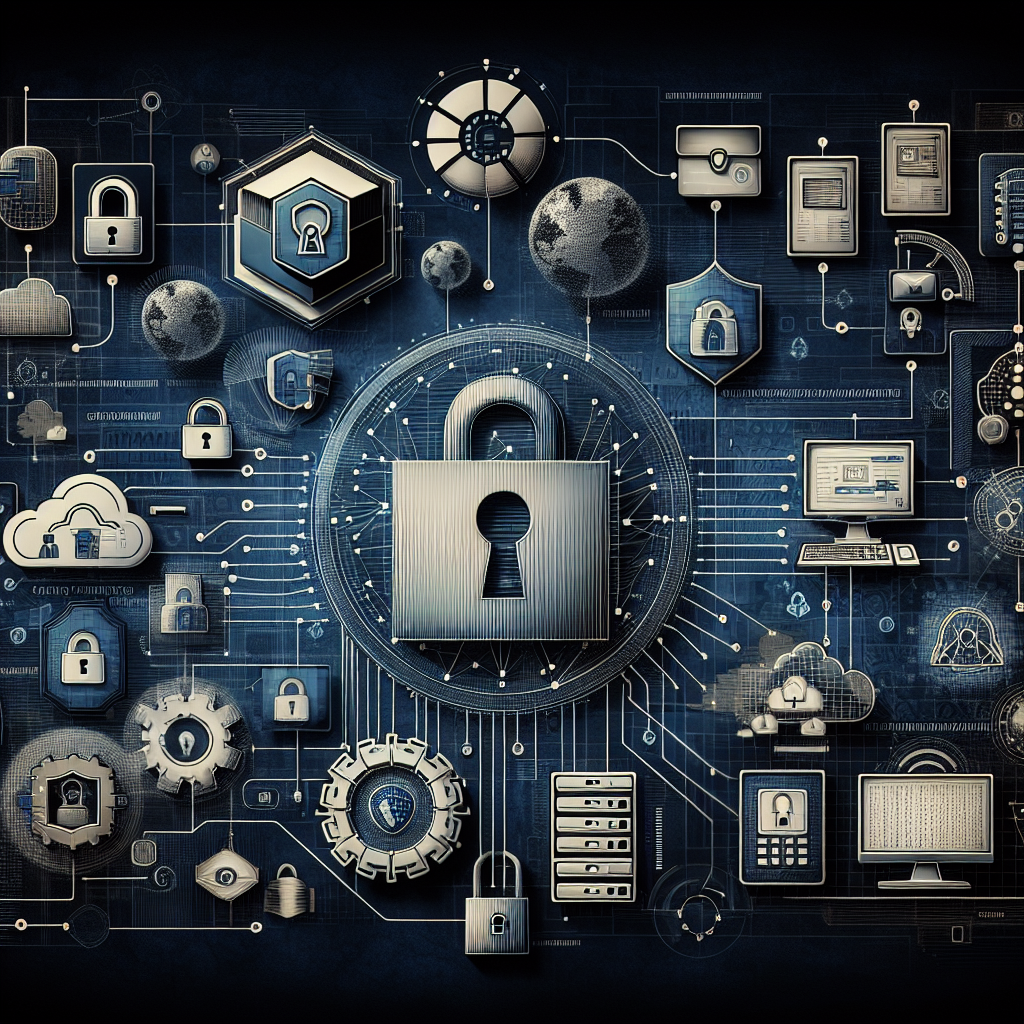
Grasping the concept of cybersecurity compliance solutions is critical for small to medium-sized businesses (SMBs) operating in today’s digital landscape. Compliance involves adhering to a set of industry standards and regulations designed to protect data and information systems. For SMBs, this means implementing security measures that meet or exceed these guidelines to safeguard sensitive data from cyber threats.
At SecureNet Solutions, we specialize in helping businesses understand the myriad of regulations they must navigate. Whether it’s the General Data Protection Regulation (GDPR), the Payment Card Industry Data Security Standard (PCI DSS), or other specific industry mandates, our expertise ensures your business is not only compliant but also secure. Staying ahead of the curve with the latest cybersecurity compliance solutions is not just about avoiding fines; it’s about building trust with your customers and establishing a reputation for reliability.
Contact us to get more information on how our tailored cybersecurity compliance solutions can protect your business from the ever-evolving landscape of cyber threats. Our proactive approach ensures that your SMB is equipped with the most advanced and effective defenses, allowing you to focus on growing your business with peace of mind.
Evaluating Your Business’s Compliance Needs
Evaluating your business’s compliance needs is a process that begins with an in-depth analysis of the specific regulations that apply to your industry and operations. Each sector may have unique standards and requirements that dictate how data should be handled and protected. Financial institutions, healthcare providers, and retail businesses, for example, each face different cybersecurity challenges and legal expectations.
To effectively assess your compliance needs, it is essential to conduct a comprehensive review of your current cybersecurity posture. This includes examining existing security policies, data management procedures, and protective measures in place. It’s also vital to identify any gaps that could leave your business vulnerable to cyber threats or non-compliance penalties.
Once you have a clear understanding of the regulatory landscape and your current cybersecurity stance, you can begin prioritizing areas for improvement. This may involve updating technology systems, enhancing employee training programs, or revising data governance strategies. Ultimately, a thorough evaluation will guide you in developing a cybersecurity compliance solutions plan that not only meets legal obligations but also fortifies your business against the risks posed by cybercriminals.
Key Regulations and Standards in Cybersecurity

Understanding the key regulations and standards in cybersecurity is critical for any business looking to protect its data and maintain compliance. These regulations are designed to set a baseline for security practices and to protect sensitive information from unauthorized access and breaches. Some of the most impactful regulations include the General Data Protection Regulation (GDPR) in the European Union, which sets stringent data protection guidelines for companies operating in EU member states, and the Health Insurance Portability and Accountability Act (HIPAA) in the United States, which outlines standards for protecting sensitive patient health information.
Other important standards include the Payment Card Industry Data Security Standard (PCI DSS), which governs the handling of credit card information and requires regular security assessments for compliance. The International Organization for Standardization (ISO) also provides a widely recognized framework with its ISO 27001 standard, offering a systematic approach to managing sensitive company information so that it remains secure.
Each regulation and standard has its set of specific requirements, and non-compliance can result in significant fines and damage to a company’s reputation. As such, it is imperative for businesses to stay informed about these regulations and to implement cybersecurity compliance solutions that meet or exceed these standards. By doing so, companies not only adhere to legal requirements but also build trust with customers and partners by demonstrating a commitment to cybersecurity.
Strategies for Effective Compliance Management

Effective compliance management requires a strategic approach that encompasses a variety of practices and tools designed to meet the ever-evolving landscape of cybersecurity threats and regulatory requirements. A fundamental strategy is to conduct regular risk assessments to identify and prioritize potential vulnerabilities within an organization’s network and systems. This proactive measure helps businesses to focus their efforts on the most critical areas that could be exploited by cyber threats.
Another key strategy is to implement an ongoing education and training program for all employees. Since human error can often lead to security breaches, it is essential that staff at all levels understand the importance of cybersecurity best practices and are kept up-to-date with the latest threats and phishing tactics used by attackers.
Additionally, businesses should establish clear cybersecurity policies and procedures, ensuring that they are well documented and easily accessible. These guidelines should outline employee responsibilities, proper usage of company assets, and protocols to follow in the event of a security incident.
Deploying the right technology also plays a significant role in compliance management. This includes utilizing cybersecurity compliance solutions such as encryption tools, firewalls, intrusion detection systems, and secure access controls. These technologies help to safeguard sensitive data and can automate certain compliance tasks, making it easier for organizations to adhere to relevant standards and regulations.
Finally, a strategy that cannot be overlooked is the regular updating and patching of software and systems. Cybercriminals often exploit known vulnerabilities, and by ensuring that all components of an organization’s digital infrastructure are up-to-date, the risk of a successful attack can be greatly reduced.
Technological Tools for Cybersecurity Compliance

In the digital age, technological tools are indispensable for achieving and maintaining cybersecurity compliance. These tools not only protect against threats but also help to ensure that businesses meet the stringent requirements set by various regulatory bodies. One of the most critical tools in any cybersecurity arsenal is a robust Security Information and Event Management (SIEM) system. SIEM solutions provide real-time analysis of security alerts generated by applications and network hardware, helping organizations to detect, analyze, and respond to potential security threats swiftly.
Another essential technology is vulnerability management software, which scans systems for known vulnerabilities and assists in the prioritization and remediation of these security gaps. By automating the process of vulnerability detection, organizations can more efficiently address potential risks before they can be exploited by malicious actors.
For the protection of data in transit and at rest, encryption software is a must-have. Encryption acts as the last line of defense by making data unreadable to unauthorized users, thus safeguarding sensitive information even in the event of a breach.
Further enhancing cybersecurity compliance, Identity and Access Management (IAM) systems ensure that only authorized individuals have access to specific data and resources. IAM tools are particularly important in enforcing the principle of least privilege, thereby minimizing the potential damage from insider threats or compromised accounts.
Lastly, compliance management platforms offer a centralized framework to manage all compliance-related activities. These platforms often feature dashboards, reporting tools, and the ability to track changes to the regulatory landscape, simplifying the complex task of compliance monitoring and documentation.
Integrating these technological tools for cybersecurity compliance into a cohesive security strategy enables organizations to fortify their defenses, automate compliance processes, and maintain a robust security posture in the face of evolving cyber threats.
Building a Culture of Security and Compliance

Building a culture of security and compliance within an organization goes beyond deploying technological solutions; it involves fostering an environment where every employee is aware of and committed to the security protocols in place. This cultural shift requires regular training and education to keep all staff members up-to-date on the latest cybersecurity threats and best practices. By instilling a sense of personal responsibility in each team member, businesses can create a robust first line of defense against cyber threats.
Engaging in routine security awareness programs and simulated phishing exercises can significantly enhance the workforce’s ability to recognize and react to potential security incidents. When employees understand the role they play in protecting the company’s digital assets, they become proactive participants in the cybersecurity compliance process.
Another key aspect is the establishment of clear policies and procedures that outline expected behaviors and the consequences of non-compliance. When policies are transparent and consistently enforced, they reinforce the importance of compliance and the shared responsibility of all staff members.
Leadership also plays a crucial role in cultivating this culture. When executives demonstrate a commitment to cybersecurity, it sets a tone that resonates throughout the organization. Leaders should communicate the value of security measures not just as a regulatory requirement but as a fundamental component of the business’s success and reputation.
At SecureNet Solutions, we understand that building and maintaining a culture of security is a continuous process that evolves with the cybersecurity landscape. Contact us to learn how we can assist your SMB in developing a tailored security and compliance strategy that aligns with your unique business needs and fosters a culture of vigilance.
Last but not least, remember that the journey towards cybersecurity compliance is ongoing. Regular review and updating of security practices, continuous education, and an adaptable approach to emerging threats are the hallmarks of a truly secure and compliant organization. SecureNet Solutions is your partner in this journey, providing the expertise and support needed to navigate the complexities of cybersecurity compliance.
